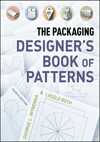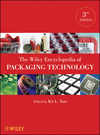Sometimes, it’s hard to get enough of a good thing. Take coconut oil for example — the organic, healthy and therapeutic liquid that millions use to improve skin as well as overall health and wellness, not only for their pets but themselves.
When sisters Carmina O’Connor and Charisa Antigua, co-founders of CocoTherapy, heard customers say they wanted a bigger size of their virgin coconut oil product, the owners listened. That was the easy part. The challenge was how to upsize without compromising quality, product safety, sustainability, efficiency and customer experience.
One thing was clear to the e-commerce company: the recyclable 16-ounce glass container CocoTherapy delivers to first-time purchasers could not be shipped in a larger size without dramatically increasing transportation costs, not to mention waste from excess packaging for shipping. Plus, the company and its co-packers were already struggling with how to reduce jar leakage and breakage rates that were approaching 15%.
Paper and cardboard options were considered, but ruled out because of production costs. Rigid plastic, which reduced weight, didn’t make branding sense for the all-natural product, either. The partners were concerned with the possibility of product degradation associated with chemical leaching from the container.
Turning to their flexible packaging partners at PAC Worldwide, CocoTherapy ultimately found the solution: a 24-ounce refill pouch.
The Sustainability Matrix
The customized pouch PAC designed checked many of the metaphorical boxes in the brand’s commitment to sustainability. It’s thin and lightweight, encourages reuse of the jars and has a low carbon footprint in manufacturing. In addition, it’s highly durable — even with multiple handlings in store, at home, or through various warehouses, trucks and trunks. This makes the packaging ideal for any type of shipping vessel or delivery system.
Sustainability goals can be illusive, however, both in terms of setting and achieving them. Nevertheless, brands cannot afford to avoid the process because today’s educated consumer demands smarter and better choices. Fortunately, there are many different ways in which to define success. The best model may be multi-faceted, focusing on factors such as landfill diversion, reuse with target-zero waste or raw material dependency reduction.
Efficiency of Pack-outs for Fulfillment Centers
Shipping a trio of eight-ounce jars (in order to satisfy customer demand for the 24-ounce size) weighs 4.5 lbs to ship all three in a box. Conversely, transporting one 24-ounce pouch weighs only 1.5 lbs — a 66% reduction of weight per package. That efficiency helped CocoTherapy achieve an estimated cost savings of 50% in getting its product to market.
Prior to the refill pouch, the company used extra plastic bubble or paper kraft filling to protect its jars, adding substantial labor and packaging waste. Because one 24-ounce pouch ships in a simple cushioned mailer or small box, the company has eliminated most of the unnecessary protective filler.
Then, there’s the gains from reduced shipping sizes. A medium flat rate box is $13.75 with priority 2-day shipping. A padded flat rate mailer or small flat rate box costs $8.00 with priority 2-Day shipping.
Pouching for Performance
Filled pouches pack the best product-to-package ratio, allowing more product per shipment to reach consumers.
CocoTherapy’s virgin product is in a semi-solid state at room temperature, but when warmed slightly in warm water, the oil becomes a liquid, making filling and dispensing easy, without waste. Pouches can be easily and completely emptied, thanks to their flexible properties.
The film is tough against puncture, drop, spills and abrasion. The proof is in the performance. Since CocoTherapy embraced the refill pouch over a year ago, there has been zero breakage or leaks. Pouches are easy to fill and require only a simple heat seal at the top when finished, enabling the package to be hermetically sealed and ready for shipment.
Branding Designed for the App-based Shopper
When scrolling on a phone or tablet to make a purchase, it’s critical to make the product highly visible and easy for consumers to understand at a glance. Shoppers are also comparing data such as $/ounce, and want to see the ingredients list. Making all of this visible on the package helped CocoTherapy boost first time as well as repeat purchases.
The Pouch Pivot
E-commerce is helping pouches push the envelope, literally. Consumers, retailers and fulfillment centers were all forced to pivot over the past year, reminding us of the pitfalls of packaging we take home from store shelves. Most of us experienced at least one broken jelly jar, broken soap bottle pump or a leaking laundry cap as we stocked our pantries during the pandemic.
Thanks to improved technologies and features, PAC’s new refill pouches are changing consumer packaging. CocoTherapy, in describing its new packaging, says, “If we could do all pouches, we would!”
Visit www.cocotherapy.com for more information.









